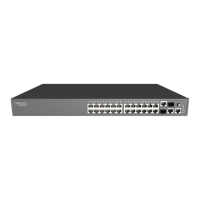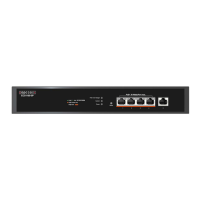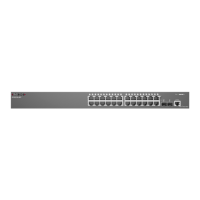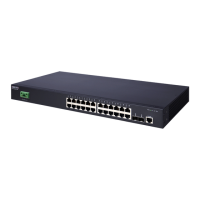C
HAPTER
20
| System Management Commands
Switch Clustering
– 576 –
then use the Commander to manage the Member switches through the
cluster’s “internal” IP addresses.
◆ Clustered switches must be in the same Ethernet broadcast domain. In
other words, clustering only functions for switches which can pass
information between the Commander and potential Candidates or
active Members through VLAN 4093.
◆ Once a switch has been configured to be a cluster Commander, it
automatically discovers other cluster-enabled switches in the network.
These “Candidate” switches only become cluster Members when
manually selected by the administrator through the management
station.
◆ The cluster VLAN 4093 is not configured by default. Before using
clustering, take the following actions to set up this VLAN:
1. Create VLAN 4093 (see "Editing VLAN Groups" on page 827).
2. Add the participating ports to this VLAN (see "Configuring VLAN
Interfaces" on page 829), and set them to hybrid mode, tagged
members, PVID = 1, and acceptable frame type = all.
N
OTE
:
Cluster Member switches can be managed either through a Telnet
connection to the Commander, or through a web management connection
to the Commander. When using a console connection, from the
Commander CLI prompt, use the rcommand to connect to the Member
switch.
cluster This command enables clustering on the switch. Use the no form to disable
clustering.
SYNTAX
[no] cluster
DEFAULT SETTING
Disabled
COMMAND MODE
Global Configuration
COMMAND USAGE
◆ To create a switch cluster, first be sure that clustering is enabled on the
switch (the default is enabled), then set the switch as a Cluster
Commander. Set a Cluster IP Pool that does not conflict with any other
IP subnets in the network. Cluster IP addresses are assigned to
switches when they become Members and are used for communication
between Member switches and the Commander.
◆ Switch clusters are limited to the same Ethernet broadcast domain.

